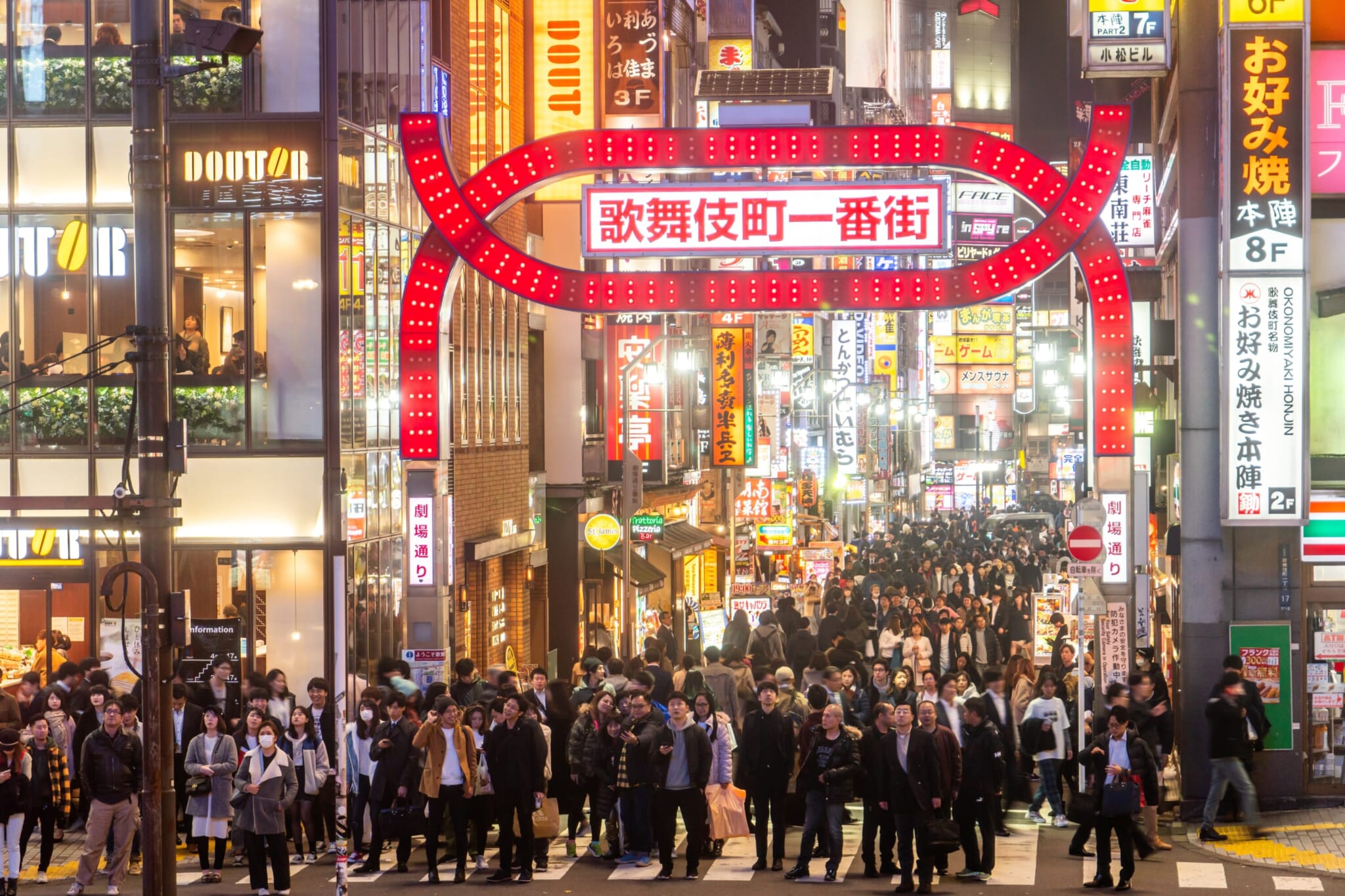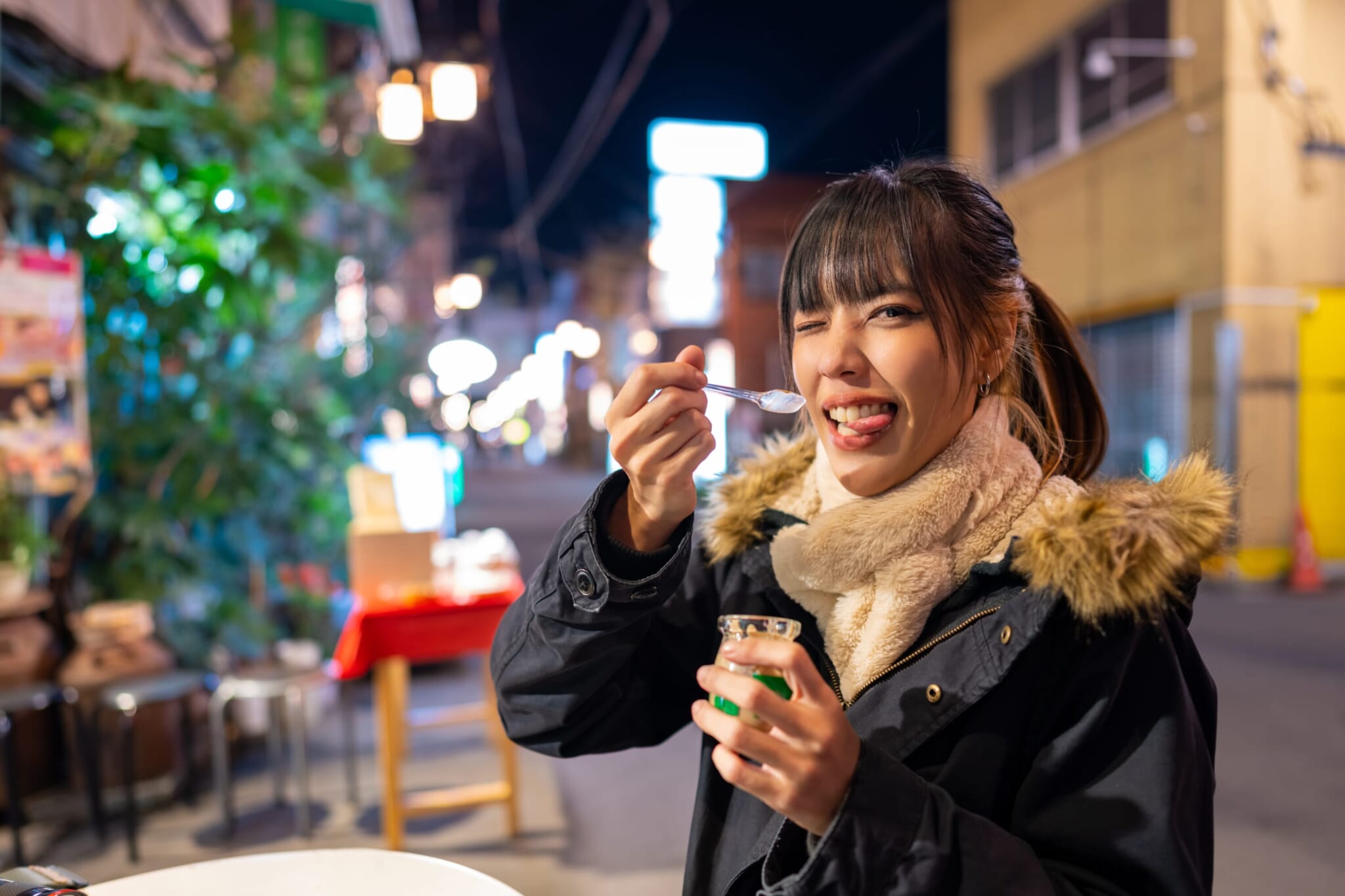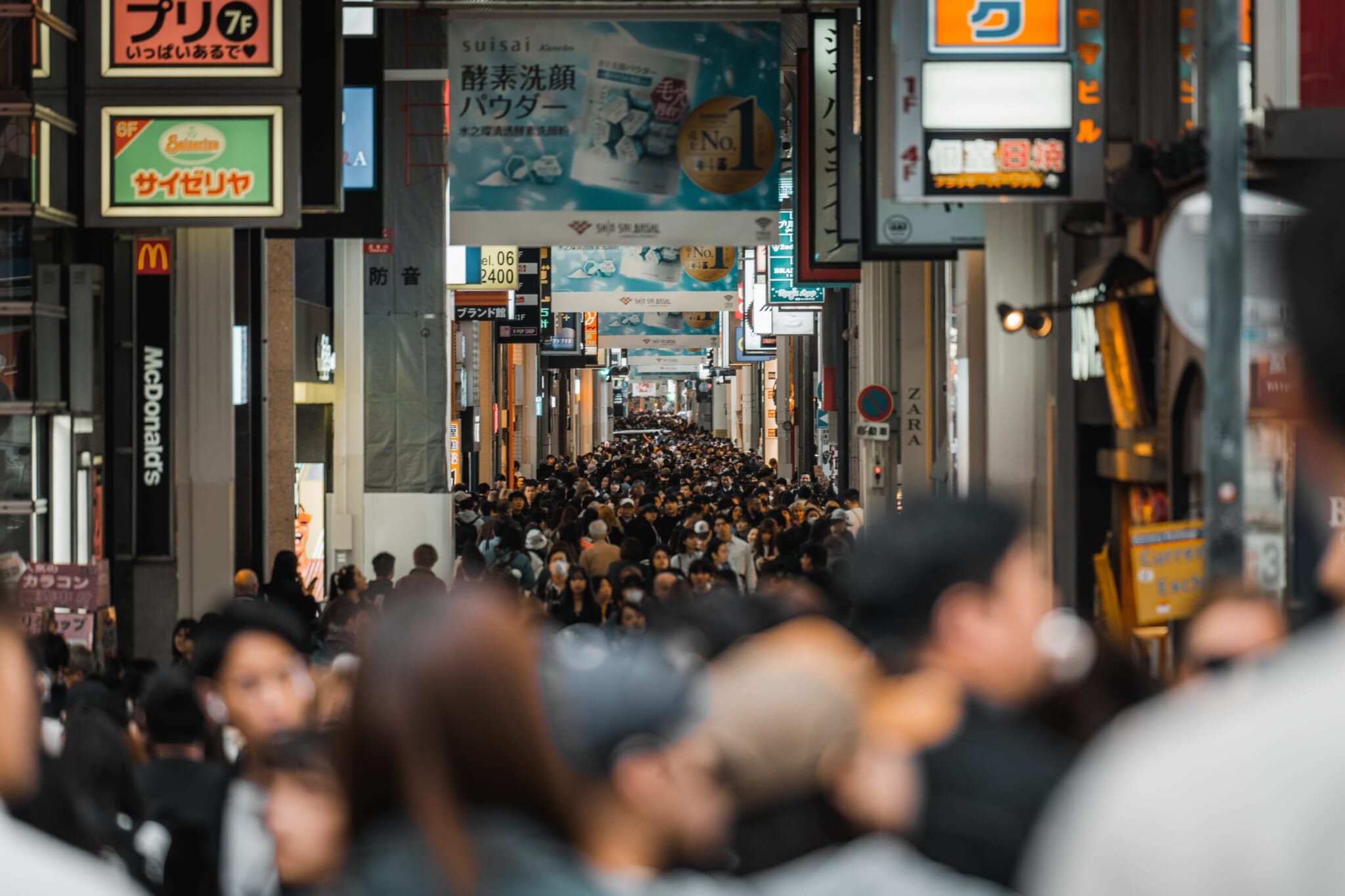Fujikawaguchiko had been a relatively quiet town until a certain image went viral on social media. Instantly, it was swarmed with tourists who left litter strewn across the streets and even blocked locals from getting to their dentist appointments. After trialing numerous measures, like signs and even security guards, the town felt it had no choice. It erected a large black sheet in front of its most famous tourist attraction: a Lawson convenience store with the majestic Mount Fuji at its back.
Merely days after installing the highly publicized tourist-deterrent, the black sheet was found to have 10 phone camera-sized holes punched into it. This year, the backstreets of Kyoto installed “no tourists” signs in residential areas to protect geisha there, who felt they were being terrorized by people chasing them down private allies as they tried to go about their daily lives. Elsewhere, an izakaya owner in Tokyo put up a “Japanese Language Only” sign for his shop. The constant push-and-pull between proprietors and tourists is at an all-time high.
The Case for Tourists
Not all tourists are bad news, though. In fact, Fujikawaguchiko originally welcomed the influx of overseas visitors, with local dentist Koichi Ide, 72, quoted in the Asahi Shimbun as saying that residents were pleased to see them at first.
In Wakayama Prefecture, tourists visiting the art island of Naoshima are wholeheartedly encouraged to come over by locals, as I found out during a visit there a couple of years ago. I ended up in an old izakaya, welcomed by locals sharing stories of island life, staying until the wee hours. Turns out they all worked in the bronze industry — Naoshima happens to be the biggest bronze manufacturer in the country.
Another memorable trip I took was in Aso last year. It was striking just how friendly the locals were. I remember having a riot during a taxi journey, as the good-humored driver regaled us with tales. He referred to himself as the “James Bond of Aso,” mainly because of his self-professed good looks.
It’s small occurrences like these which reinforce the idea of traveling as a force for good. An organic sharing of cultures, anecdotes and spilling tea. Without traveling, how do we discover cultures, aside from a newsfeed or a history book? But there are two ways to do it: one which tries to respect local people and one that doesn’t. Admittedly, though, this is not a black and white issue.
For me, a tourist is someone who visits somewhere that they aren’t familiar with. So, it makes sense that many people aren’t used to Japanese customs. I remember once striding right onto the tatami mats of a restaurant with my muddy shoes on, not noticing the no-shoes sign. Not all bad behavior is intentional, and I do think it’s important to note that.
When the black sheet was put up, many people came to the defense of the town, decrying the misbehaving tourists. The town really did try everything that it could to solve the problem, such as putting up signs and even employing security guards. The sheet was the last resort.
So why was it forced to take such a drastic measure?

The Overtourism Issue
Overtourism. The new buzz word in travel media. According to Nikkei Asia tourism numbers reached a record high in March 2024, at over 3 million travelers, even more than the pre-COVID days in 2019. The main issue, however, isn’t the numbers, but the concentration. Tourists head to the same spots: Tokyo, Kyoto and Osaka.
A couple of weeks back, I spoke to Peter Carnell, a professional guide in Nagano, who mentioned that he doesn’t think small groups of tourists are at fault. Rather, it’s the pack mentality which leads people to think that they’ve not left their own land. Surrounded by country folk, it’s easy to forget you’re in a place that holds different ideals.
I have an unproven but logical theory about this. It stems from a few pals whose flights were canceled. They had been set to enter Japan during the year of the lockdown. Denied, they had to wait, scrolling to grab that Japan dream while stuck at home.
The same mountain views appeared in algorithms. TikTok showed the same cafés and restaurants. Huge numbers marveled at the omurice man on Instagram. There were also several videos of geisha, who looked so mysterious and, of course, the famous picture of the convenience store sitting underneath the country’s iconic mountain. Social media traffic all went to the same places, the same shops and the same sights.
Since the borders opened, hundreds of thousands of people have been heading in the same direction, to places they’ve been dreaming of visiting since they first saw them online. And who can blame them? I’d be the same if my long-anticipated trip had been canceled at the last minute, and I was finally able to go. Many people don’t work in the travel industry and don’t know where to look for the best off-the-beaten-path places in each country.

Showing Respect
We can’t expect everyone to do the right thing and find somewhere away from the crowds, but the golden guide to being a good tourist is one word: respect. Respect the country you’re going to. Try to do the right thing. Join in lines properly. Don’t litter. Be considerate of others. These things just come down to common sense.
For anyone who wants to know specific rules in Japan, I wrote a guide, so you don’t make any unintentional cultural faux pas like I did. You can read about how to behave in Japan here. Let’s hope that the next time tourists in Japan hit the news, it’s for the right reasons.
Related Posts
- Blockade to be Set Up to Block the Mount Fuji Lawson View
- How to Behave in Japan
- Japan’s Overtourism Conundrum | News Roundup
Updated On June 20, 2024








